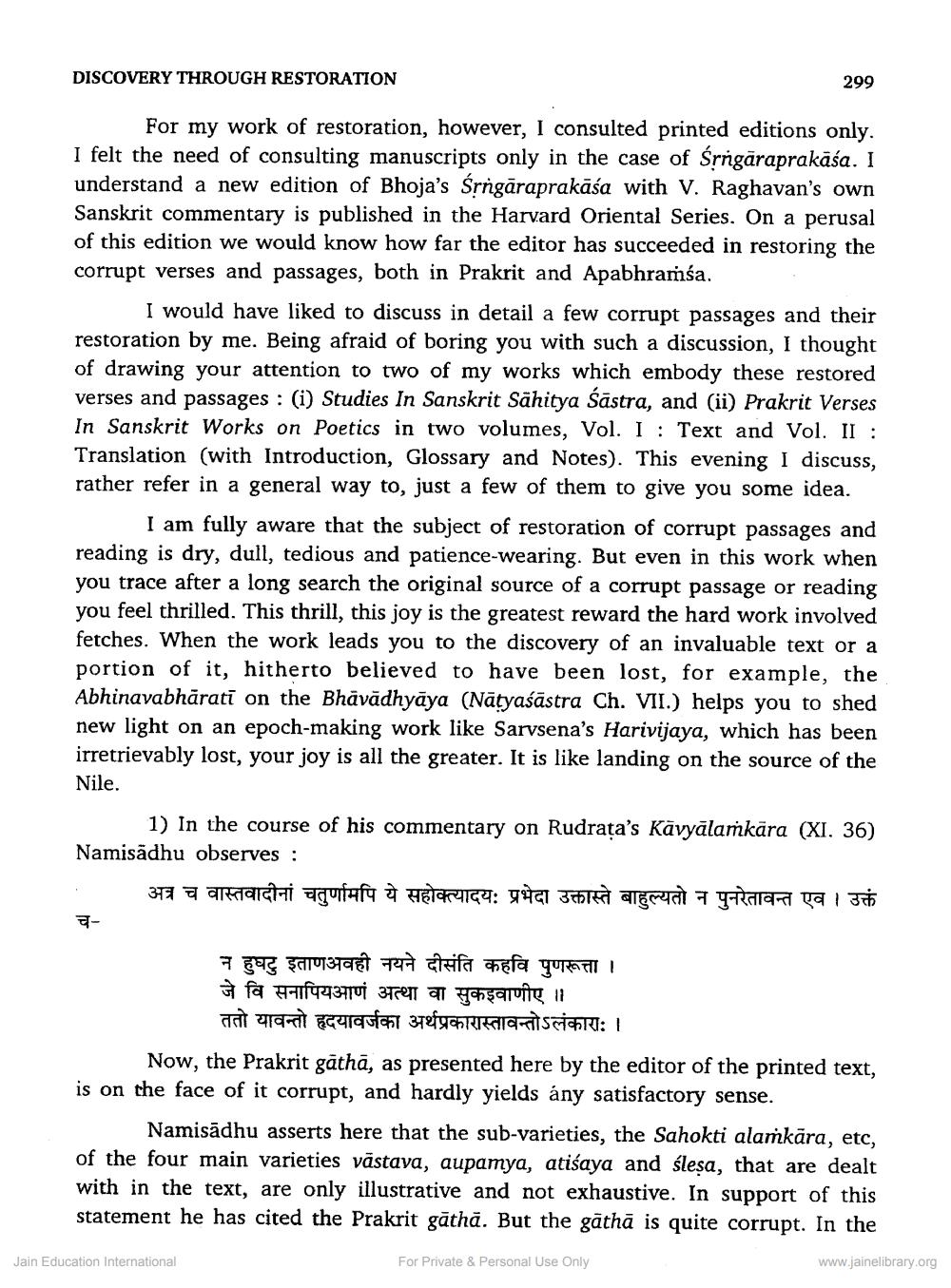________________ DISCOVERY THROUGH RESTORATION 299 For my work of restoration, however, I consulted printed editions only. I felt the need of consulting manuscripts only in the case of srngaraprakasa. I understand a new edition of Bhoja's Srrgaraprakasa with V. Raghavan's own Sanskrit commentary is published in the Harvard Oriental Series. On a perusal of this edition we would know how far the editor has succeeded in restoring the corrupt verses and passages, both in Prakrit and Apabhramsa. I would have liked to discuss in detail a few corrupt passages and their restoration by me. Being afraid of boring you with such a discussion, I thought of drawing your attention to two of my works which embody these restored verses and passages : (i) Studies In Sanskrit Sahitya Sastra, and (ii) Prakrit Verses In Sanskrit Works on Poetics in two volumes, Vol. I : Text and Vol. II : Translation (with Introduction, Glossary and Notes). This evening I discuss, rather refer in a general way to, just a few of them to give you some idea. I am fully aware that the subject of restoration of corrupt passages and reading is dry, dull, tedious and patience-wearing. But even in this work when you trace after a long search the original source of a corrupt passage or reading you feel thrilled. This thrill, this joy is the greatest reward the hard work involved fetches. When the work leads you to the discovery of an invaluable text or a portion of it, hitherto believed to have been lost, for example, the Abhinavabharati on the Bhavadhyaya (Natyasastra Ch. VII.) helps you to shed new light on an epoch-making work like Sarvsena's Harivijaya, which has been irretrievably lost, your joy is all the greater. It is like landing on the source of the Nile. 1) In the course of his commentary on Rudrata's Kavyalamkara (XI. 36) Namisadhu observes : . अत्र च वास्तवादीनां चतुर्णामपि ये सहोक्त्यादयः प्रभेदा उक्तास्ते बाहुल्यतो न पुनरेतावन्त एव / उक्तं न हुघटु इताणअवही नयने दीसंति कहवि पुणरूत्ता / जे वि सनापियआणं अत्था वा सुकइवाणीए / ततो यावन्तो हृदयावर्जका अर्थप्रकारास्तावन्तोऽलंकाराः / Now, the Prakrit gatha, as presented here by the editor of the printed text, is on the face of it corrupt, and hardly yields any satisfactory sense. Namisadhu asserts here that the sub-varieties, the Sahokti alamkara, etc, of the four main varieties vastava, aupamya, atisaya and slesa, that are dealt with in the text, are only illustrative and not exhaustive. In support of this statement he has cited the Prakrit gatha. But the gatha is quite corrupt. In the Jain Education International For Private & Personal Use Only www.jainelibrary.org




